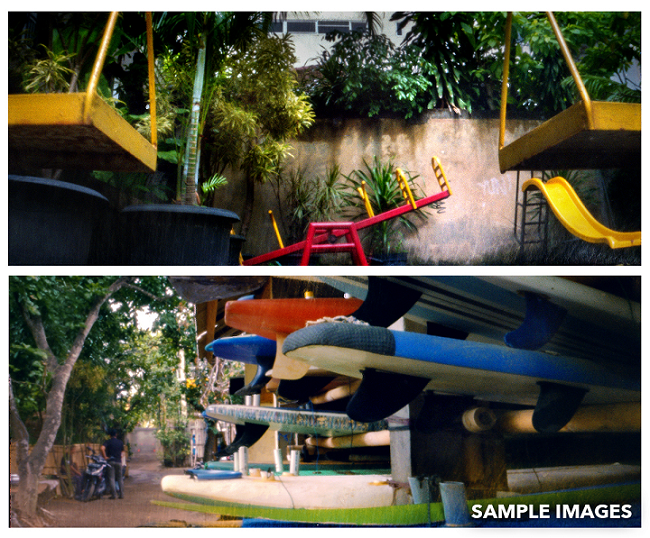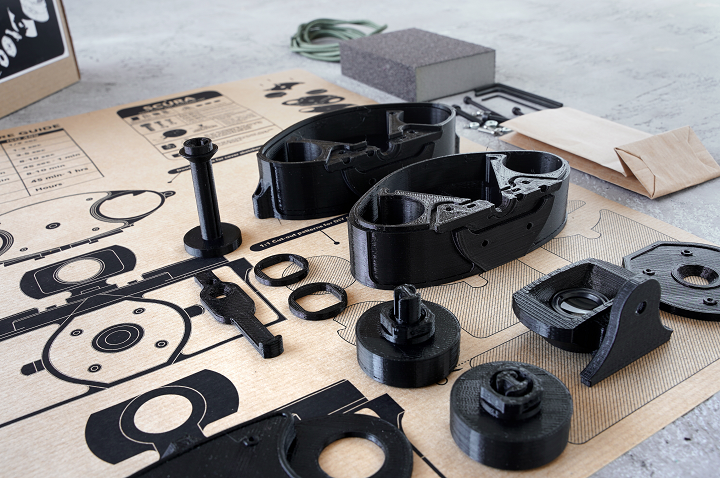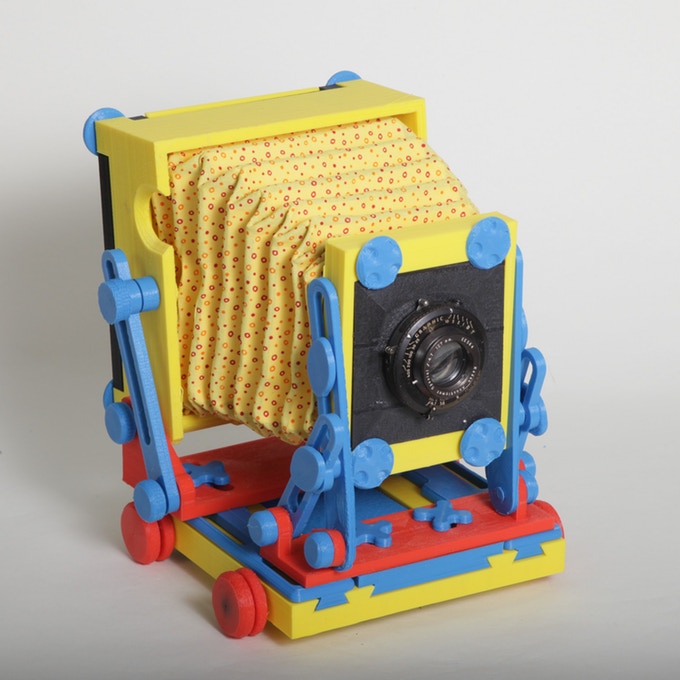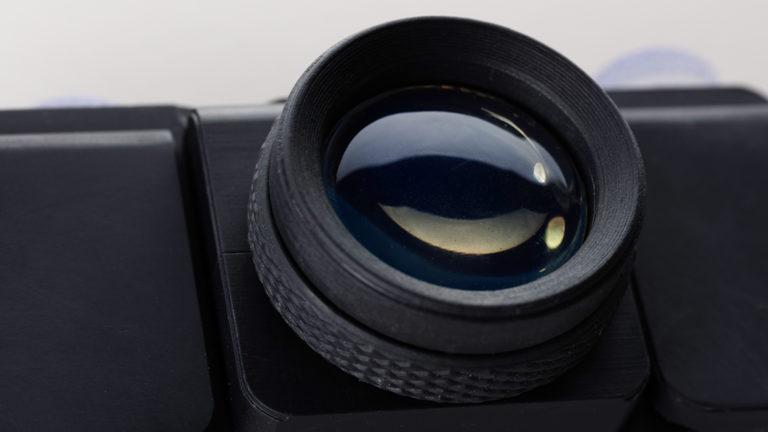They say a picture is worth a thousand words, and as someone who takes a lot of photos (on my phone), I definitely agree. But that doesn’t mean your camera needs to cost $1,000, right? Enter Dora Goodman, who makes beautiful handcrafted, open source 3D printed cameras.
“Only you know exactly how you like your own camera, that peculiar way you hold it, or the shape that fits best into your hands,” the website states. “On top of our unique, hand-crafted camera straps that we revamped to be more durable than ever before, we offer something revolutionary: a free, open-source file that you can customize to your heart’s content, and 3D print your own camera.”
Together with Goodman Lab, a community of innovative design and photography enthusiasts, Goodman is part of a movement that is dedicated to making high quality, 3D printable open source projects…like film cameras. The Goodman Lab projects are available through the website to any interested person with access to a 3D printer and a creative spirit. Even better, the 3D printed cameras don’t seem terribly expensive.
Now, Goodman is introducing her newest exciting 3D printable masterpiece. SCURA, which she tells us is a “love project” of hers, is a 35 mm panoramic pinhole camera that shoots 60 x 25 images.
“The system is the same as always, we offer the files free of charge for anyone, all of them are open source,” Goodman told 3DPrint.com.
 With most pinhole cameras, 3D printed or otherwise, the film lies completely flat inside, which gives the photographs a distorted edge. But the SCURA isn’t most pinhole cameras – it features a special curved design, which allows light to reach all of the film evenly for distortion-free images. The framing was also increased to give the camera a panoramic field of view. Additionally, the most important part of a pinhole camera is the hole, and Goodman “put a lot of effort into finding the technology for the perfect, precisely drilled hole.”
With most pinhole cameras, 3D printed or otherwise, the film lies completely flat inside, which gives the photographs a distorted edge. But the SCURA isn’t most pinhole cameras – it features a special curved design, which allows light to reach all of the film evenly for distortion-free images. The framing was also increased to give the camera a panoramic field of view. Additionally, the most important part of a pinhole camera is the hole, and Goodman “put a lot of effort into finding the technology for the perfect, precisely drilled hole.”
“When working on this camera, we have focused on combining the design and functionality of 3D printing, resulting in a minimalist approach to pinhole photography,” the website states. “Along the laser-drilled pinhole and the curved design, we have managed to achieve a distortion-free, yet amazing picture quality.”
Goodman offers users precise but smooth exposure control with a magnetic shutter, and the SCURA is convenient, as pinhole cameras have only a few simple moving parts. It’s also easy to use, which makes it a good choice for beginner and professional photographers, and because it’s an open source design, the camera is available for anyone to make.
The SCURA is customizable with a self-adhesive stock skin, which comes with the kit, or you can use Goodman’s cut-out sheets and tutorial videos to personalize the camera with your own ideas.
“I always encourage everyone to print their own pinhole camera, to challenge themselves and share their results with us, all our projects are inspired by the different approaches of our community,” Goodman writes.
 There are two options to get your own SCURA, and the first is to 3D print your own by signing in on the website to gain free access to all of the camera plans and design files. The accessible open source package includes all of the documentation you need to build the SCURA from scratch, which Goodman notes is a “fun and easy” project. But, while the available online guides make assembly fairly straightforward, the process was “designed to be an intriguing journey on the way.”
There are two options to get your own SCURA, and the first is to 3D print your own by signing in on the website to gain free access to all of the camera plans and design files. The accessible open source package includes all of the documentation you need to build the SCURA from scratch, which Goodman notes is a “fun and easy” project. But, while the available online guides make assembly fairly straightforward, the process was “designed to be an intriguing journey on the way.”
If you are 3D printing the SCURA yourself, but need the drilled 0.3 mm pinhole plate, shutter magnets, and the screws and key sets for assembly, you can purchase a hardware kit for just $38, which includes an Allen key set, socket head Allen screws, and a male female thread adapter.
But, if you don’t have easy access to a 3D printer, you can also purchase the DIY kit for the SCURA, which includes all of the elements, equipment, and tools you’ll need without having to purchase additional parts. Every part of the pinhole camera in the kit is pre-printed, and you also get the tools, screws, and hardware to assemble and post-process the camera.
The basic kit also includes:
- 1 laser drilled pinhole plate
- 1 set of faux-leather decor foil
- 1 sanding sponge
- 1 strap cord
- zero waste wrapping paper with cut-out samples
There are some additional add-ons you can purchase with the basic $78 DIY kit, such as a viewfinder for $23, a $35 pre-cut wood inlay, and a pro flash mount with bubble level and smartphone holder, also for $35. You can see the exposure information, dimensions, and additional specs for the SCURA on the website, and check out the tutorial video for help building this lightweight yet powerful camera.
Even with all of the optional extras, the SCURA kit costs less than $200, which is a pretty good deal for this attractive, customizable panoramic pinhole camera.
Discuss this story and other 3D printing topics at 3DPrintBoard.com or share your thoughts in the Facebook comments below.
(Images provided by Dora Goodman)
The post Dora Goodman: Build Your Own 3D Printed SCURA Panoramic Pinhole Camera appeared first on 3DPrint.com | The Voice of 3D Printing / Additive Manufacturing.










